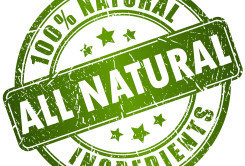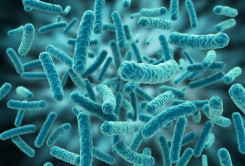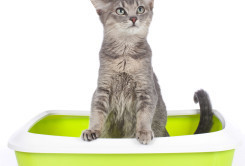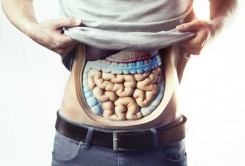Brenda Watson's Blog, page 6
May 8, 2015
What Does “Fresh” Really Mean?

I was walking through the produce section of the grocery store the other day and a lady looked at me and asked where the locally grown produce was located. I replied with “I usually look for the areas of organic vs. conventionally grown”. Her question got me thinking because the locally grown conventional produce could actually have just as much pesticide residue as regular conventional produce, wherever it is grown.
I started considering the new “food vocabulary” we now have to know as we walk into a grocery store. It’s an ever-changing environment when it comes to food. So what does it all mean? Let’s look at some of the words we frequently use these days to describe our food.
At least the term “organic” has strict guidelines. Technically, “organic” on a label certifies that the food was processed in accordance with US Department of Agriculture regulations that promote sustainability and MINIMIZE exposure to pesticide and other synthetic materials. Notice the word ‘minimize’. Believe me, this gets crazy. I decided to follow the link above to view the “allowed synthetic substances”. The list alone had me feeling like I was being sucked down into quicksand – and yet, all these regulations are certainly better than no regulations by far! I’m so glad someone takes the time to make those lists!
The term “natural”, when seen on meats and egg products means MINIMALLY processed (that word again). If you’re interested, here’s more explanation on what that could include – and bottom line – that word “natural” means next to nothing. The FDA doesn’t technically define the word, however the agency says it won’t object to the claim “natural” as long as there are no artificial or synthetic ingredients in a particular product. The truth is that the word “natural” has become a billion dollar marketing ploy, with 60% of Americans purchasing a food more readily if that word is on the label.
“Local” may be defined as products from a person’s own state, or sometimes from bordering states as well. A different definition could be anything brought into a store within 24 hours of harvest. Wow, now that’s a big difference! To get it to the store within 24 hours, it better be close – and that sounds fresh to me!
“Artisan” products of all types have historically been defined as ‘handcrafted, made in small batches’. This term was used to denote premium quality, explaining higher prices. In today’s world, it’s a term fast food chains are now claiming. I just cannot imagine “artisan” and “Domino’s” in the same sentence. Can you?
“Seasonal” is a term that’s heard often as well. One definition refers to the window of time in which a given food is freshest, ripest and most abundant in a particular region. In other words, ‘grown near me now’. That has a good ring to it.
And one more – the term “fresh”! Another mind boggler!! “Fresh” could mean the following – ‘just picked or gathered produce, live or unprocessed’, or even ‘dishes made the day they are sold’ – I read this in Consumer Reports. HMMM?? Really, that could mean just about anything.
I hope you’re laughing along with me – or at least a bit confused too. I don’t think I’m alone in all this. One thing, I’m grateful we’re defining and considering words like “organic” and “seasonal” instead of “processed”, “artificially flavored” and “trans fat” today. Hopefully those terms are on their way out! We’ve come a long way.
I can tell you though, the next food related definitions I would really like to understand are the words MINIMIZED and MINIMALLY!! What are your favorites?
May 1, 2015
Guess What? Gut Microbes Don’t Thrive on Yo-Yo Dieting Either!

We have a war going on inside of our guts! It is a constant battle between all kinds of bacteria, fungi, and viruses. Do you know what they are all fighting about? FOOD! So to support our health it logically follows we should find out what feeds the good guys and stick to those foods. Right?
The specific foods of choice vary for the different bacteria – good and bad (tip – the bad guys love sugar and carbs). I wrote a lot about that recently in The Skinny Gut Diet. The book is based on how the ratio of different bacteria in the gut reflects whether we are lean or overweight. One of the main nutrients necessary to support good bacteria is fiber.
An interesting recent study shows that when microbes are starved of fiber they actually feed on your gut lining!!! This certainly explains why people very commonly end up with leaky gut (intestinal permeability). The average American only gets about 12-15 grams of fiber a day in their diet. This amount is well below the amount documented as necessary for a healthy digestive system. I’ve been suggesting 35-40 grams daily for years.
Apparently, in the absence of fiber, the microbes are gobbling up the delicate mucosal lining. A thick healthy mucosal lining creates a natural barrier between our gut and our bloodstream, keeping undesirable toxins and undigested proteins where they belong – in the bowel. A thin mucosal lining begins to allow those irritating substances to pass into general circulation – the lining begins to “leak”. Various inflammatory conditions throughout our bodies are the eventual outcome – diseases like cardiovascular disease, high blood pressure, metabolic syndrome and diabetes are some examples.
The study shows that dietary fiber and the diversity of the gut microbes are the crucial elements with regard to keeping your gut lining healthy.
How does this work? A group of researchers at the University of Michigan Medical School found when they fed a group of mice a high-fiber diet the result was a healthy gut lining. When they switched the mice to a more fiber-free diet the mucosal lining layer dramatically diminished.
They then took a different group of mice and fed them a high fiber diet and a fiber-free diet on alternating days. It would be like us having a healthy day of eating with plenty of fiber in our diet and the next day eating all low fiber foods like those found at McDonald’s. I call this Yo-Yo eating. On examination, they then found that the Yo-Yo diet created a thinner mucosal lining – ½ the thickness of mice consistently fed fiber. Obviously the mucosal lining was seriously affected by dietary input.
In another study, adults with diminished gut linings were given a high fiber bar daily. Their mucosal lining thickened. As soon as the daily fiber was discontinued, their lining returned to its original compromised state.
When the gut lining thins it can manifest in severe health consequences in humans as well. A Swedish research team published a study last year that showed a link between bacteria penetrating a diminished mucus lining and the condition called ulcerative colitis, a form of severe bowel inflammation.
I hope you find these studies as interesting as I do. They show how extremely reactive the gut microbiota is to dietary input, specifically lack of fiber. Rapid diet changes likely served us in our evolutionary history in times of feast or famine, but they don’t do us any favors today.
In our culture, with so much junk food at our fingertips, we commonly shift back and forth between healthy and unhealthy food choices, often from one day to the next. We make poor food choices, and then feel guilty the next day and choose better foods = Yo-Yo dieting. Admit it, we always knew that way of eating couldn’t be healthful, and now here’s even more evidence. Science is showing us how choosing chronic low fiber diets over our lifetime, and worse yet, over generations, might very well permanently alter our guts and our health.
Studies like these make it even clearer how our gut bacteria are our key to vibrant health or debilitating disease. So keep eating that fiber! Lets feed the good guys and maintain our gut lining!
April 24, 2015
Is Your Best Friend Constipated?

Constipation may not be a topic you’d choose for daily conversation, but it’s really nothing to be embarrassed about. We’ve all experienced it at one time or another – and we realize how debilitating it can become. Although in our society, the medical professionals still say that 3 bowel movements weekly is “normal” – let me tell you, you don’t want to be “normal”. A healthy human being should eliminate daily. And it’s the same for our faithful canine companions.
Dogs also suffer from constipation. If your dog is showing signs of having trouble eliminating, take him to the vet to make sure there is not an underlying condition. If there’s not a physical problem, then it’s up to us, and what we provide as owners, to help our dogs eliminate better.
Dogs show signs of being constipated by straining to defecate – with small volume expelled. You may notice hard bowel movements. As I mentioned, dogs need to eliminate everyday to be healthy. They may also look bloated and/or show signs of pain when attempting to defecate. Lack of appetite or even depression could be a sign of toxic buildup or discomfort due to constipation. Be sure to notice any differences in color or texture.
Well, what exactly can we do at home to help our dogs? Making sure they eat a good diet with moist food – not just dry food – is a must. Supply your pet with plenty of clean water and exercise.
Certain supplements have also been shown to help. Just like people, dogs need the good bacteria from probiotics to balance their guts and help with regularity. Choose a supplement that is potent enough to make a difference – at least 20 billion cultures per serving (whether in pill or powder) and containing 10 different strains of lactobacillus and bifido bacteria. Dogs have many of the same strains of good bacteria in their gut as their owners so providing them with a high culture count and multi strain supplement is as important for them as it is for us.
Here’s another important tip that many may not know – Omega 3s, which vets suggest for many other problems in dogs like kidney, heart and joint diseases, is also very effective in relieving constipation. A high dose omega blend of EPA and DHA totaling about 750mg of total omega3 is best.
Chances are good that you regularly clean up as your dog eliminates. That poop helps you to notice any changes that may be occurring in your pet’s health. Our dogs are so willing to give us unconditional love – and we enjoy it thoroughly! However they depend on us totally for their digestive needs. Let’s make sure they have the same opportunities for vital health that we do!
April 17, 2015
Constipation Just a Human Issue? I Think Not!

Statistics show constipation in humans is an extremely common and sometimes very expensive issue. Too often people end up in the doctor’s office or emergency room when the problem becomes painful or even potentially dangerous due to the fact there could be a blockage of some kind.
Well, our dogs and cats can have the same problem with constipation, even though diarrhea is seen more often in pets.
I’ll bet most loving pet owners pay more attention to how their animals poop then they do to their own poop – an interesting thought in itself.
What is the very first thing a vet will ask you when you take your animal in for a problem or an exam? “How are they pooping?” Right? Wouldn’t it be great if our human doctors asked us that on our regular check-ups? Most doctors haven’t been trained to consider it very important. I’ll sadly tell you that from lots of experience.
Back to our pets. Let’s start with cats. Cats should poop every single day. If you are disciplined about cleaning out that litter box you will be able to monitor this easily. Their poop should be brown, formed (not loose) and soft and moist enough for the litter to stick to it. Simple enough. If this is not happening then your cat is constipated.
Not every cat is going to let you know if they are uncomfortable because they are constipated. People will think it’s normal for their cat to go once every 2 or 3 days! Cats, like humans, are supposed to detox through their poop – every day.
So if you believe your cat is constipated, first take them to the vet to be checked. It’s important to make sure there is not a blockage or serious problem. After that, it’s time to consider some steps you can take at home to help remedy the problem.
The biggest issue with cats and constipation is dehydration, so make sure your cat is eating a moisture rich food. Did you know that cats are designed to get the majority of the water they need from what they eat? Actually 70-75%. Studies show that generally a dry food diet may not be the best choice for your cats. They won’t realize they need to make up the moisture difference by drinking more water. It’s impossible to force them to drink more water than they normally desire. Of course, be sure they have plenty of fresh, clean water available at all times so they can drink when they’re thirsty.
Natural remedies for constipation are as effective and safe as those made for humans. The addition of aloe vera juice into your cat’s food may be very helpful.
Perhaps one of the best solutions is to increase the good bacteria in your cat’s digestive tract with probiotics. Make sure you choose a probiotic that is formulated specifically for cats. Just like in people cats need a high potency probiotic with at least 10 strains.
Using a powdered probiotic that can be added to your cat’s food makes supplementing with probiotics effortless. I’m sure you’ve experienced how interesting (or impossible) it can be in many cases to persuade your cat to take a pill. A powdered form removes that issue all together.
I’ll bet you’re relieved to know that there is so much that can be done to help your feline friends should they suffer from constipation. I can say with sincerity, having suffered from it myself and having worked to help countless others – you just feel miserable. We certainly don’t want our loving pets to live in misery, as they bring us so much JOY!!!!
Let’s help them out.
April 9, 2015
Do Pets Need to Detox Just Like People?
In recent years we have seen a drastic increase in the number of people in this country who are overweight and obese. This has led to a scary increase in many chronic health conditions ranging from diabetes and metabolic syndrome to heart disease. We are also seeing a rise in NAFLD (nonalcoholic fatty liver disease) in humans. I’ve written many blogs on this topic. Nonalcoholic fatty liver disease is a term used to describe the accumulation of fat in the liver of people who drink little or no alcohol. People usually don’t have symptoms, or if they do, the symptoms are mild—most commonly, episodes of fatigue. But we now know that the increase in NAFLD is due in part to obesity. It is no secret that weight loss is an important factor in improving a fatty liver.
As a big proponent of supporting liver function in people by using detoxing programs, I have always suggested the use of herbs, amino acids, and nutraceuticals in a combination formula. I have seen this formula help countless people over the years as they work on improving their health and losing weight.
Veterinarians are also finding that, just like people, dogs and cats that carry extra weight place additional demands on their organs too, especially on their livers.
So the question is: how do we help our furry friends who are overweight? We can’t exactly offer our pets suggestions like “Push away your plate before you are full,” or “Stop opening the refrigerator after 7 PM for that extra snack!” I sometimes joke about our dogs with my husband Stan, “I’ll bet they wish they had thumbs so they could open the refrigerator.” You see, I am also trying to control the weight in my dogs at this time, yet they have learned so many ways to control me and devour more food! I often read articles that claim overweight pets habitually hang around during mealtimes and while food is being prepared. Well, where else would they be?
Hepatic lipidosis (commonly known as fatty liver) is one of the most common feline liver diseases in cats. But dogs can also suffer from fatty liver, which results in a decrease in liver function and leads to myriad other health conditions. Once again, we share the same problems with our health as our pets when it comes to both weight and liver disease.
Guess what? The answer to this problem is the same for both humans and pets: lose the extra pounds. When we—and our pets—lose weight, the liver then loses fat. And by detoxing the liver, it will naturally become healthier.
Many pet owners have been detoxing their own livers for years. We now know that liver detox is important for our beloved pets as well. A very important point to remember is to choose a gentle daily detox for our pets (just as we do for ourselves) that will not cause them to feel poorly as their livers detox. You’ll want to find a formula that includes milk thistle, turmeric, and MSM. These gentle ingredients support and assist in liver detoxification in animals just as they do in humans. Look for a product that includes the above ingredients. Make sure that it’s specifically formulated for pets.
Now to address the issue of helping our furry friends lose weight; the responsibility is ours. We must make sure to not overfeed them or give them too many treats. I have one important rule with my dogs: I never feed them from the table!
Admittedly, it’s not easy to refuse those pitiful eyes when they look up at me asking for a treat. But I know that their health depends on it.
April 2, 2015
The Lowdown on How the Guts of our Pets Mimic their Human Owners!!!

For many years I have written about the benefit of probiotics on our health. In my early years, working in a Natural Health Clinic that offered total health solutions, I experienced first hand the great effects probiotics have on people. I worked one on one with many who were trying to reverse health conditions naturally or in conjunction with traditional medicine. In my own practice as well as throughout the clinic our goal was to assist people in detoxification of their bodies. These cleansing practices were found effective in prevention of disease, as well as in supporting the healing of many conditions that traditional medicine had not been able to solve.
In our Clinic this was accomplished with modalities like massage, sauna, herbs, colon hydrotherapy, juice fasting and nutrition. During this period of time probiotics were a vital part of my practice. My specialty was the digestive system (I’ll bet you might have guessed!) and I was performing colonics as well as suggesting herbal remedies and teaching good nutrition. So in this way very early on, through practical application, I observed over and over how probiotics could greatly improve people’s health.
Now let’s fast forward to today – many years later! We have entered the age of the study of the Human Microbiome (fancy name for gut population) and its effects on human health and disease. The National Institutes of Health (NIH) has supported this so scientists can have the funding to study all aspects of bacteria, both in and on our bodies. Almost daily we can read more research studies touting the benefits of probiotics on everything from GI problems to anxiety and depression. As new studies have come forth, we have even offered many of them to you on this blog.
Since we have trillions of bacteria and over 180 different strains of bacteria in our guts, we now fully realize two important things – how critical it is to replenish our good bacteria if we want to be healthy, and also just what type of probiotic supplement our bodies need most – one that is high potency (meaning a high culture count) and that also contains many different good bacterial strains.
BUT – have we forgotten about the digestive systems of our babies? Those wonderful animals that keep us company, are always excited to see us and never criticize us for our shortcomings? Gosh I hope not.
Come to find out these guys (dogs and cats) need probiotics just like we do. In fact their digestive systems take a beating from antibiotics, anti-inflammatory drugs and toxins just like ours do. Actually they are finding that the gut bacteria of the animals we live with actually mimic ours, having many of the same bacteria – even though there are certain strains that are specific to animals.
I interviewed Dr. Rob Knight who is a scientist studying the gut microbiome and founded The American Gut Project. These scientists actually analyze stool samples (for a fee) from anyone, and they will accept your animal’s sample as well. Dr. Knight explained to me that he can take samples from humans and match them to their dog by simply comparing their bacterial composition, without knowing anything else about them. He can literally match owners with their dogs through their similarities of bacteria!
Even though “official” research is beginning to demonstrate that dogs and cats derive many health benefits from probiotics, Stan and I and countless other dog owners and vets have already experienced that high dose, multi-strain probiotics can help pets with digestive upsets like vomiting, diarrhea, and constipation, skin issues – the list goes on. For cats and dogs, a healthy population of gut bacteria is vital for gut health, and just like with their humans, plays a critical role in removing toxins, enhancing digestion and out-competing many strains of disease causing microorganisms.
In conclusion, I know I am going to make sure my animals have the benefit of quality probiotics – ones made especially for cats and dogs – with at least 20 billion cultures per capsule and 10 different probiotic strains.
In this simple way we can provide our animals a much better chance of keeping their health on the right track — so that we have them around longer to love!!! YEA!!!
The Lowdown on How the Guts of our Pets Mimic their Human Owner!!!
For many years I have written about the benefit of probiotics on our health. In my early years, working in a Natural Health Clinic that offered total health solutions, I experienced first hand the great effects probiotics have on people. I worked one on one with many who were trying to reverse health conditions naturally or in conjunction with traditional medicine. In my own practice as well as throughout the clinic our goal was to assist people in detoxification of their bodies. These cleansing practices were found effective in prevention of disease, as well as in supporting the healing of many conditions that traditional medicine had not been able to solve.
In our Clinic this was accomplished with modalities like massage, sauna, herbs, colon hydrotherapy, juice fasting and nutrition. During this period of time probiotics were a vital part of my practice. My specialty was the digestive system (I’ll bet you might have guessed!) and I was performing colonics as well as suggesting herbal remedies and teaching good nutrition. So in this way very early on, through practical application, I observed over and over how probiotics could greatly improve people’s health.
Now let’s fast forward to today – many years later! We have entered the age of the study of the Human Microbiome (fancy name for gut population) and its effects on human health and disease. The National Institutes of Health (NIH) has supported this so scientists can have the funding to study all aspects of bacteria, both in and on our bodies. Almost daily we can read more research studies touting the benefits of probiotics on everything from GI problems to anxiety and depression. As new studies have come forth, we have even offered many of them to you on this blog.
Since we have trillions of bacteria and over 180 different strains of bacteria in our guts, we now fully realize two important things – how critical it is to replenish our good bacteria if we want to be healthy, and also just what type of probiotic supplement our bodies need most – one that is high potency (meaning a high culture count) and that also contains many different good bacterial strains.
BUT – have we forgotten about the digestive systems of our babies? Those wonderful animals that keep us company, are always excited to see us and never criticize us for our shortcomings? Gosh I hope not.
Come to find out these guys (dogs and cats) need probiotics just like we do. In fact their digestive systems take a beating from antibiotics, anti-inflammatory drugs and toxins just like ours do. Actually they are finding that the gut bacteria of the animals we live with actually mimic ours, having many of the same bacteria – even though there are certain strains that are specific to animals.
I interviewed Dr. Rob Knight who is a scientist studying the gut microbiome and founded The American Gut Project. These scientists actually analyze stool samples (for a fee) from anyone, and they will accept your animal’s sample as well. Dr. Knight explained to me that he can take samples from humans and match them to their dog by simply comparing their bacterial composition, without knowing anything else about them. He can literally match owners with their dogs through their similarities of bacteria!
Even though “official” research is beginning to demonstrate that dogs and cats derive many health benefits from probiotics, Stan and I and countless other dog owners and vets have already experienced that high dose, multi-strain probiotics can help pets with digestive upsets like vomiting, diarrhea, and constipation, skin issues – the list goes on. For cats and dogs, a healthy population of gut bacteria is vital for gut health, and just like with their humans, plays a critical role in removing toxins, enhancing digestion and out-competing many strains of disease causing microorganisms.
In conclusion, I know I am going to make sure my animals have the benefit of quality probiotics – ones made especially for cats and dogs – with at least 20 billion cultures per capsule and 10 different probiotic strains.
In this simple way we can provide our animals a much better chance of keeping their health on the right track — so that we have them around longer to love!!! YEA!!!
March 9, 2015
Nutrition is Essential for Good Mental Health

Proper diet and nutrition provide the building blocks for optimal health. This is also true for mental health. In a recent paper published in The Lancet Psychiatry Today, researchers stated that, as with other medical conditions, the field of psychiatry and public health should recognize and embrace diet and nutrition as important contributors to mental health.
“While the determinants of mental health are complex, the emerging and compelling evidence for nutrition as a key factor in the high prevalence and incidence of mental disorders suggests that nutrition is as important to psychiatry as it is to cardiology, endocrinology, and gastroenterology,” Jerome Sarris, PhD, lead author. “In the last few years, significant links have been established between nutritional quality and mental health. Scientifically rigorous studies have made important contributions to our understanding of the role of nutrition in mental health.”
The researchers recommend nutrient-based prescription of those nutrients that have a clear link to brain health, including omega-3s, B vitamins, choline, iron, zinc, magnesium, S-adenosyl methionine (SAMe), vitamin D, and amino acids when they cannot be consumed in sufficient amounts from the diet.
Diet during pregnancy and through childhood is a crucial part of incorporating diet and nutrition into mental health care, note the authors. Early-life nutrition and deficiencies are emerging as a significant contributor to poor mental health status in children and adolescents.
“It’s time for clinicians to consider diet and additional nutrients as part of the treating package to manage the enormous burden of mental ill health,” noted Sarris.
I agree. Hopefully more doctors in the mental health field get the message.
March 6, 2015
Eat Organic to Reduce Pesticide Exposure

The best way to reduce pesticide exposure—especially when it comes to organophosphate pesticides, which are some of the most common pesticides in use—is to eat organic foods. A recent study published in the Environmental Health Perspectives journal supports this notion.
Researchers analyzed dietary organophosphate pesticide exposure of over 4,500 people from six cities in the United States. They found that among people who were eating similar amounts of fruits and vegetables, those who reported eating organic produce had significantly lower pesticide levels than those eating conventionally grown produce.
“For most Americans, diet is the primary source of organophosphate pesticide exposure,” said Cynthia Curl, PhD. “The study suggests that by eating organically grown versions of those foods highest in pesticide residues, we can make a measurable difference in the levels of pesticides in our bodies.”
The researchers were able to predict pesticide exposure levels based on the amount and type of produce each participant consumed. “The next step is to use these exposure predictions to examine the relationship between dietary exposure to pesticides and health outcomes, including neurological and cognitive endpoints,” Curl noted.
She recommended, as I do, eating organic versions of the foods highest in pesticide levels, as identified by the Environmental Working Group’s Dirty Dozen list.
March 4, 2015
Changes in Gut Microbiome Precede Development of Type 1 Diabetes

Type 1 diabetes involves the inability of beta cells in the pancreas to produce insulin, the hormone that regulates blood sugar levels. As a result, people with type 1 diabetes must take insulin injections and carefully monitor their food intake to properly regulate blood sugar. Type 1 diabetes is most commonly diagnosed during childhood in children who are genetically predisposed to the disease. In a recent study published in the journal Cell Host & Microbe, researchers followed 33 infants who were genetically predisposed to type 1 diabetes. Out of these 33 children, a handful went on to develop the disease.
From birth to age three the researchers collected data on the composition of the gut microbiome of these children. They found a 25 percent decrease in community diversity, or the number of species, one year prior to diagnosis, suggesting that a decrease in gut microbial diversity may trigger the onset of the disease.
“This study is unique because we have taken a cohort of children at high risk of developing type 1 diabetes and then followed what changes in the microbiome tip the balance toward progression to the disease,” said Ramnik Xavier, MD, PhD. Another author called the study “a compelling piece of evidence pointing toward a direct role of the microbiome in type 1 diabetes.”
The researchers noted a decrease in bacterial species known to help regulate gut health and an increase in potentially harmful bacteria known to promote inflammation. This gut imbalance, or dysbiosis, is common among many health conditions, and research shows that it may be the trigger that leads to many chronic diseases.
More studies are needed to determine whether type 1 diabetes can be prevented or treated by making modifications to the gut microbiota. The positive results of this study will certainly spur more research in this area. I will keep you posted as I learn more.



